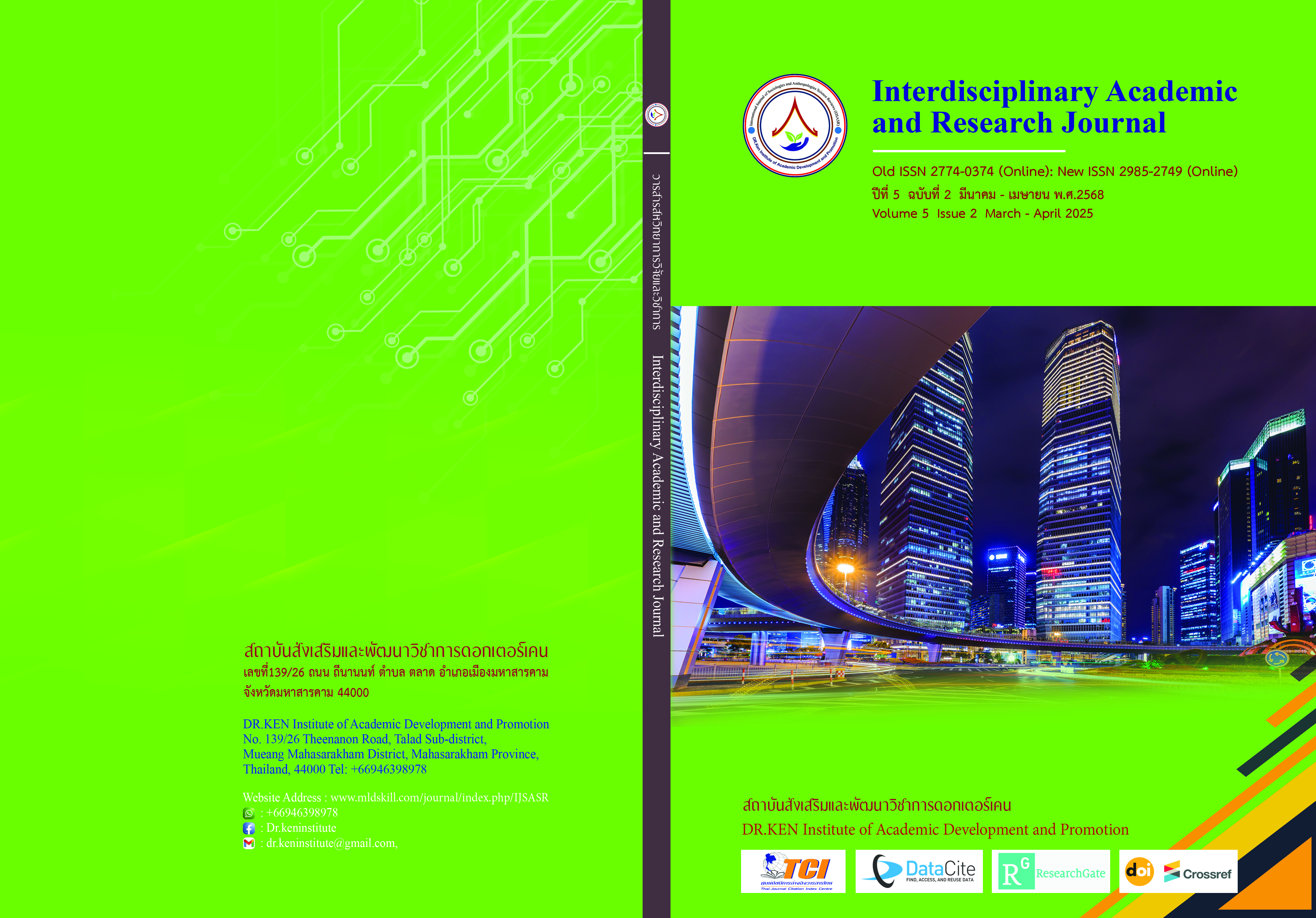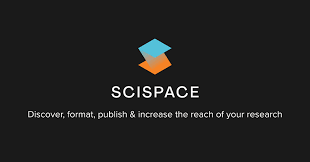The Effects of Peer and Self-editing Checklists on English Writing Errors of Students in a Creative English Writing Subject
DOI:
https://doi.org/10.60027/iarj.2025.280564Keywords:
Writing Skills, Writing, Writing Principles, English, Writing AssessmentAbstract
Background and Aims: A Peer and Self-Editing Checklist promotes critical thinking and attention to detail, assisting writers in identifying errors and improving their work. It also promotes collaboration and improves writing skills by providing constructive feedback to peers. Thus, the objectives of this research were to compare the differences in English writing errors among students. The assessment tool used was based on correct writing principles for 22 samples in grades 7 to 9 during the second semester of 2022 at Surawiwat School, Suranaree University of Technology. The research was conducted in an experimental design, collecting both qualitative and quantitative data and analyzing it using basic statistics.
Methodology: The research follows an experimental design, where the target group for the study was selected through purposive sampling from students in grades 7 to 9, totaling 22 students during the second semester of the academic year 2022 at Surawiwat School, Suranaree University of Technology. The experiment involved the use of three learning plans, and the evaluation was conducted using a 10-item peer and self-assessment writing test. Data was collected both qualitatively and quantitatively and analyzed using basic statistical Coefficient of Variation: CV methods.
Result: The research findings showed that when analyzing the basic statistical values, considering the mean and standard deviation from the three measurements, the mean English writing errors of the students in the second measurement were the highest (M=8.364, SD=0.902), followed by the third and first measurements (M=8.318, SD=1.086 and M=7.864, SD=1.320, respectively). This indicates that the second test had less variance in the mean English writing errors compared to the first test and the scores of the third test.
Conclusion: The research was conducted using an experimental research design. The target group was selected using purposive sampling from Grade 7 to 9 students, totaling 22 students, during the second semester of the 2022 academic year at Surawiwat School, Suranaree University of Technology. Both qualitative and quantitative data were collected and analyzed using basic statistical methods.
Results: It was found that the mean errors in English writing of students using the Peer and Self-Editing Checklist differed between each measurement, but the differences were not statistically significant. The data showed significant sphericity at the .05 level (Mauchly’s W = .883; p = .287). When analyzing the differences in the mean errors in English writing between each measurement (Test of Within-Subjects Effects), it was found that the mean errors in English writing from at least one measurement differed from other measurements, but the differences were not statistically significant at the .05 level (Greenhouse-Geisser = .895; F(1.790, 37.588) = 2.792, p = .080).
References
ปราวีณยา สุวรรณณัฐโชติ. (2558). ผลของการใช้คำถามประเมินตนเองและการประเมินโดยเพื่อนเพื่อเสริมสร้างการรับรู้ความสามารถของตนเองและความรู้บูรณาการ TPACK ด้านการออกแบบสื่อดิจิทัลของนิสิตครู. วารสารครุศาสตร์จุฬาลงกรณ์มหาวิทยาลัย, 43(4), 129 – 145.
พินดา วราสุนันท์. (2558). การพัฒนาผู้เรียนด้วยการให้ข้อมูลย้อนกลับโดยเพื่อน (Developing Learners by Using Peer Feedback). วารสารมนุษยศาสตร์และสังคมศาสตร์ มหาวิทยาลัยราชภัฏมหาสารคาม, 9(1), 33-40.
พูลสุข กรรณาริก และสงัด เซียนจันทึก. (2564). การพัฒนาการเขียนภาษาอังกฤษเชิงสร้างสรรค์โดยการใช้การเรียนรู้แบบร่วมมือของนักศึกษาสาขาวิชาการสอนภาษาอังกฤษ คณะศึกษาศาสตร์ มหาวิทยาลัยมหามกุฎราชวิทยาลัย วิทยาเขตล้านนา. วารสาร มมร วิชาการล้านนา, 10(1), 37 – 47.
วัชรา เล่าเรียนดี. (2556). ศาสตร์การนิเทศการสอนและการโค้ช การพัฒนาวิชาชีพ: ทฤษฎีกลยุทธ์สู่การปรฏิบัติ. (พิมพ์ครั้งที่ 12). นครปฐม: โรงพิมพ์มหาวิทยาลัยศิลปากร.
Academy, T. (2020). The Basics of Teaching English as a Foreign Language. Ratchaphruek Journal, 1(1), 18-29. https://bit.ly/367PCjc.
Alice Oshima, Ann Hogue. (1991). Writing Academic English: A Writing and Sentence Structure Workbook for International Students (Longman Academic Writing Series). United Kingdom: Longman.
Belachew, M., Getinet, M., & Gashaye, A. (2015). Perception and practice of self-assessment in EFL writing classrooms. Journal of Languages and Culture, 6(1), 1–8.
Meletiadou, E. (2021). Exploring the Impact of Peer Assessment on EFL Students’ Writing Performance. IAFOR Journal of Education: Language Learning in Education, 9(3), 77 - 95.
Nielsen, L., Hansen, & Storgaard, K. (2014). Personas Is Applicable: A Study on the Use of Personas in Denmark Proceedings of the SIGCHI Conference on Human Factors in Computing Systems. Toronto, Ontario: ACM.
Robinson, P. (1991). ESP Today: A Practitioner’s Guide, Developments in English for Specific Purposes. In: Cambridge: Cambridge University Press. Successful practices and essential strategies. Journal of Research in Reading, 37, 1–16.
Yu, R., & Yang, L. (2021). ESL/EFL Learners’ Responses to Teacher Written Feedback: Reviewing a Recent Decade of Empirical Studies. Frontiers in Psychology, 25, 29 – 65.
Zhang, X., & Chen, J. (1989). The techniques to teach writing. English Teaching Forum, 27(2), 34.
Downloads
Published
How to Cite
Issue
Section
License
Copyright (c) 2025 Interdisciplinary Academic and Research Journal

This work is licensed under a Creative Commons Attribution-NonCommercial-NoDerivatives 4.0 International License.
Copyright on any article in the Interdisciplinary Academic and Research Journal is retained by the author(s) under the under the Creative Commons Attribution-NonCommercial-NoDerivatives 4.0 International License. Permission to use text, content, images, etc. of publication. Any user to read, download, copy, distribute, print, search, or link to the full texts of articles, crawl them for indexing, pass them as data to software, or use them for any other lawful purpose. But do not use it for commercial use or with the intent to benefit any business.














.png)

